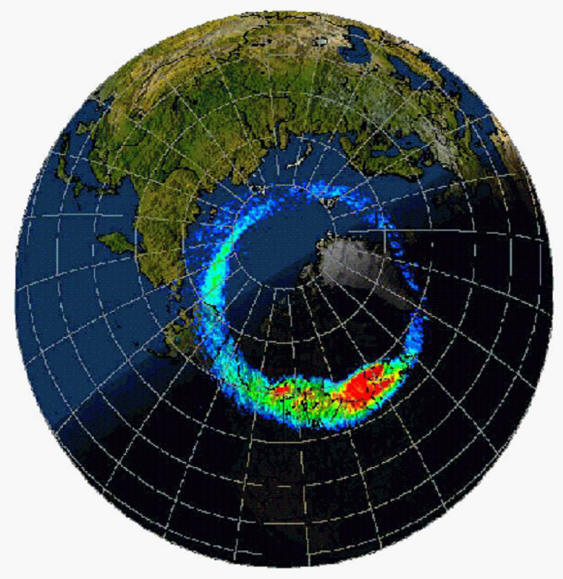This article will cause some controversy and rethinking and debating. Fun!
---------
http://www.thunderbolts.info/tpod/00current.htmRing of Ice, Ring of FireJul 08, 2009
Everyone knows the Ice Age was a time when the Earth cooled, glaciers moved down from the North, and the mammoths froze. However, everyone is mistaken.
Lands in the Arctic get little precipitation, and a mile or more of ice is a lot of water. Before it can fall as snow, it has to evaporate from the ocean and be transported. John Tyndall, a prominent British physicist, realized in 1883 that a mountain of ice in the North requires a lot of energy everywhere else, which means heat. An ice age requires not a cooler climate but a warmer one with a cold spot where the ice is.
That lands near the pole were warm and ice-free during the Ice Age has been known—and ignored—since the 1700s. Tools and other signs of human habitation are (conventionally) at least 30,000 years old.
Pleistocene remains indicate that extensive grasslands supported large populations of many animal species. This warm climate stretched across the northern parts of Siberia, Alaska, Canada, and Greenland, while land to the South was buried under thousands of feet of ice. Further south, beyond the ice, the warm climate again asserted itself.
Glacial scratches in rock show that the ice moved not from the pole but from a number of localized sources. It melted back in a similar way, retreating to local high points from all directions, not generally from south to north.
It all but disappeared during the ensuing interglacial period. The mammoths and the other species now discovered melting out of the permafrost flourished for another several thousand years before being quick-frozen in the purée of flesh, fiber, and gravel that covers the Arctic today. A correct map of the data shows that the ice occurred in a ring around the pole.
In his recent book Primordial Star, Dwardu Cardona correlates this ring of ice with the ring of the aurora, such as in the image at the top of the page showing the auroral oval taken by the Ultraviolet Imager (UVI) onboard the NASA satellite "Polar" on April 4, 1997. With nearly the same diameters, the ring of fiery plasma that makes up present-day auroras would shine its ghostly light on top of the ring of Pleistocene glaciations.
The present-day aurora is almost transparent, but plasma toroids (called conventionally accretion disks) around flaring dwarf stars are dusty and opaque. Given the situation described in Cardona’s previous volumes, God Star and Flare Star, the Pleistocene sun would have been such an episodically flaring brown dwarf star.
Presumably, auroral toroids in such an environment would also be dusty and opaque. Because Earth and the brown dwarf would have been aligned on the same axis, as we see with the “jets” in Herbig-Haro stars, the Pleistocene sun would have been immobile at the north celestial pole. The opaque auroral ring would have cast a permanent shadow onto the Earth at precisely the location of the glacial ring.
The cold temperatures in the shadowed lands would keep the precipitation from warmer lands beyond from melting, and a ring of ice would have accumulated beneath the ring of auroral fire.
Mel Acheson

The North auroral oval. Credit: NASA, NSSDC, Holzworth and Meng.






